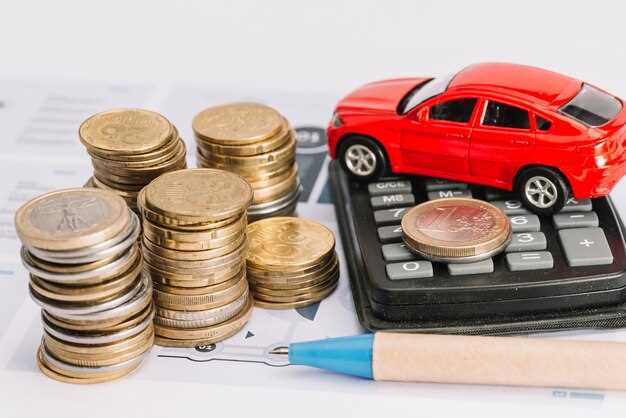
Owning a race car can be an exhilarating experience, but it also entails significant financial responsibility. Effective budgeting is essential to ensure that the excitement of racing does not lead to unforeseen costs that could derail your passion. Understanding the various expenses associated with race car ownership is crucial in maintaining a sustainable financial plan.
Race cars are not just about the initial purchase price; numerous ongoing expenses contribute to the overall cost of ownership. From maintenance and tires to fuel, insurance, and transportation to events, each element requires careful cost consideration. By examining these factors closely, potential race car owners can create a comprehensive budget that accommodates both regular and unexpected expenses.
Developing a smart budget plan involves more than just calculating immediate costs. It is essential to allocate funds for long-term investments such as upgrades, safety equipment, and track fees. With proper budgeting, you can enjoy your racing journey while minimizing financial stress and ensuring that your passion for speed doesn’t come at too high a cost.
Understanding the Hidden Costs of Motorsport Participation

Participating in motorsport goes beyond the purchase of a race car and track fees; it involves a multitude of hidden costs that can significantly impact your overall budgeting. First, consider the maintenance expenses associated with high-performance vehicles. Regular maintenance, including oil changes, tire replacements, and brake servicing, can add up quickly and must be accounted for in your financial planning.
Next, there’s the cost of safety equipment which is often overlooked. Helmets, suits, gloves, and other safety gear are mandatory in most racing events and can represent a substantial investment. Additionally, each race may require specific modifications or upgrades to your car to meet regulatory standards, introducing more financial unpredictability into your budget.
Transporting your race car to events can also incur significant costs. Whether you opt for a trailer or a specialized transporter, fuel, insurance, and potential towing fees are essential factors to include in your budgeting. If you’re traveling to events that are further away, accommodation and meal expenses can escalate the overall cost of participation.
Entry fees for races vary widely and can quickly drain your budget if you plan to participate in multiple events throughout the season. Furthermore, unforeseen expenses such as repairs from crashes or mechanical failures can catch even the most prepared racers off guard, making it essential to have a contingency fund in place.
Finally, consider the social aspects of motorsport participation. Networking, sponsorship opportunities, and team building can lead to additional costs but can also create valuable connections within the racing community. Balancing these elements within your budget allows for a more realistic and successful approach to race car ownership.
Creating a Detailed Budget: Key Categories for Race Car Expenses
Developing a comprehensive budget for race car ownership is crucial to ensure that costs are managed effectively. Proper budgeting allows owners to understand financial commitments and helps prevent overspending. Here are the essential categories to consider when creating a detailed budget for race car expenses:
1. Initial Purchase Cost
The starting point of any race car budget is the initial purchase price. This includes not only the sticker price but also taxes, fees, and possible financing costs. Always account for the condition of the car, whether it is new or used, as this can significantly affect the overall cost.
2. Maintenance and Repairs
Regular maintenance is vital to keep a race car in prime condition. Budgeting for oil changes, tire replacements, brake servicing, and other routine checks is necessary. Additionally, anticipate unexpected repairs and set aside a contingency fund for major issues that may arise during race season.
3. Insurance
Insurance cost can vary widely based on the type of race car and how it is used. It’s essential to secure adequate coverage that protects against both damage and liability. Research various insurance options to find the best fit for your budget while ensuring compliance with racing regulations.
4. Fuel Expenses
Fuel is a significant ongoing expense for any racing enthusiast. Calculate fuel costs based on expected mileage and current fuel prices. Incorporate variations depending on the type of races participated in, as different events may require more fuel than others.
5. Tires
Tires are critical for performance and safety on the track. Factor in the cost of tires for both practice sessions and races. Consider different tire options available for various track conditions and how often they will need to be replaced.
6. Track Fees and Registration
Participating in race events typically involves registration and track fees. Each event will have its associated costs, so it’s vital to include all planned races in your budget. Research each event to understand the associated costs accurately.
7. Modifications and Upgrades
Investing in performance enhancements is often necessary for competitive racing. Budget for immediate modifications, such as suspension upgrades or engine tuning, and plan for future enhancements to maintain competitive edges.
8. Transportation and Hauling
If you plan to transport your race car to various venues, consider costs associated with towing or employing a transport service. Maintenance for trailers or towing vehicles should also be included in this category, as they are essential for safe and efficient transport.
9. Team Expenses
If racing is a team effort, factor in costs for team members, including salaries, travel expenses, and accommodations during race events. A well-prepared team can significantly improve performance on the track.
10. Contingency Fund
Lastly, always allocate a portion of your budget for unexpected costs. Having a contingency fund can help cover emergencies or surprise expenses, ensuring smooth operations throughout the racing season.
By meticulously outlining these key categories, race car owners can create an effective budget that allows them to enjoy their passion while managing costs effectively.
Strategies for Reducing Overhead in Race Car Maintenance and Upgrades

Effective budgeting is crucial for maintaining a race car without overextending financially. One of the primary strategies for reducing overhead is to establish a comprehensive maintenance schedule that aligns with both your racing calendar and budget constraints. Regular maintenance checks help to identify issues early, which can prevent costly repairs down the line.
Utilizing used or refurbished parts is another practical approach. Sourcing high-quality second-hand components can significantly lower upgrade costs while still enhancing performance. Many motorsport communities have platforms for trading parts, making it easier to find reliable options at reduced prices.
Performing routine maintenance yourself, when feasible, can also cut expenses. Gaining hands-on skills allows you to handle simple tasks like oil changes, brake replacements, and tire rotations, which reduces reliance on professional services. Online tutorials and local workshops can aid in developing the necessary skills for this approach.
Joining a racing club or community can provide access to shared resources, tools, and knowledge. Pooling resources with fellow enthusiasts can lead to bulk purchasing discounts on parts and services, further minimizing costs. Additionally, many local clubs offer technical support and group buys, which can save both time and money.
Consider upgrading components selectively and strategically rather than replacing everything at once. Prioritize modifications that yield the most significant performance improvements based on your racing class and goals. This focused approach allows you to make impactful upgrades over time while staying within your budget.
Finally, track your spending meticulously. Maintaining a detailed record of all expenses related to maintenance and upgrades helps identify areas where savings can be made. Regularly reviewing your budget allows for better financial planning and more informed decisions regarding future expenses.












